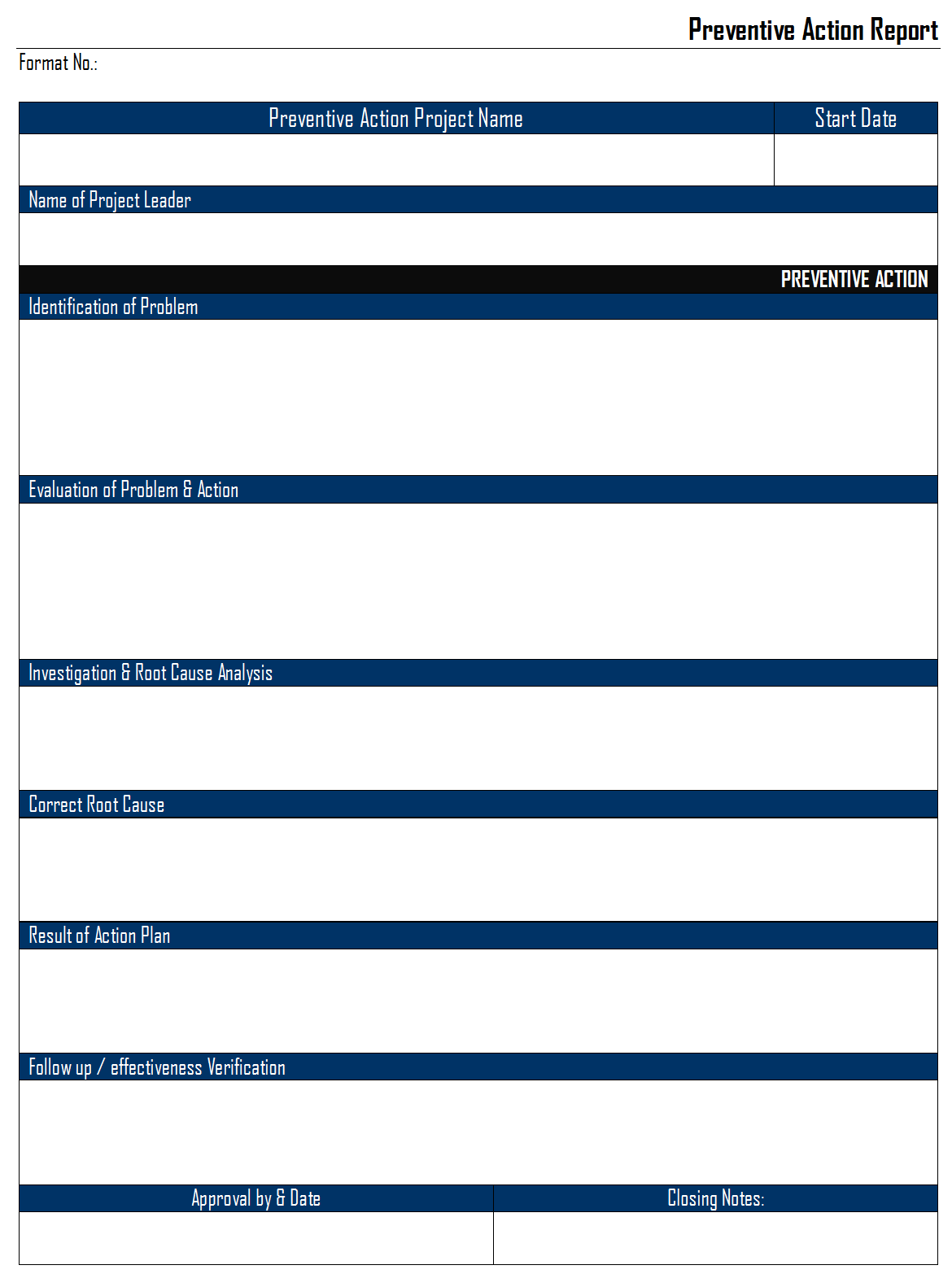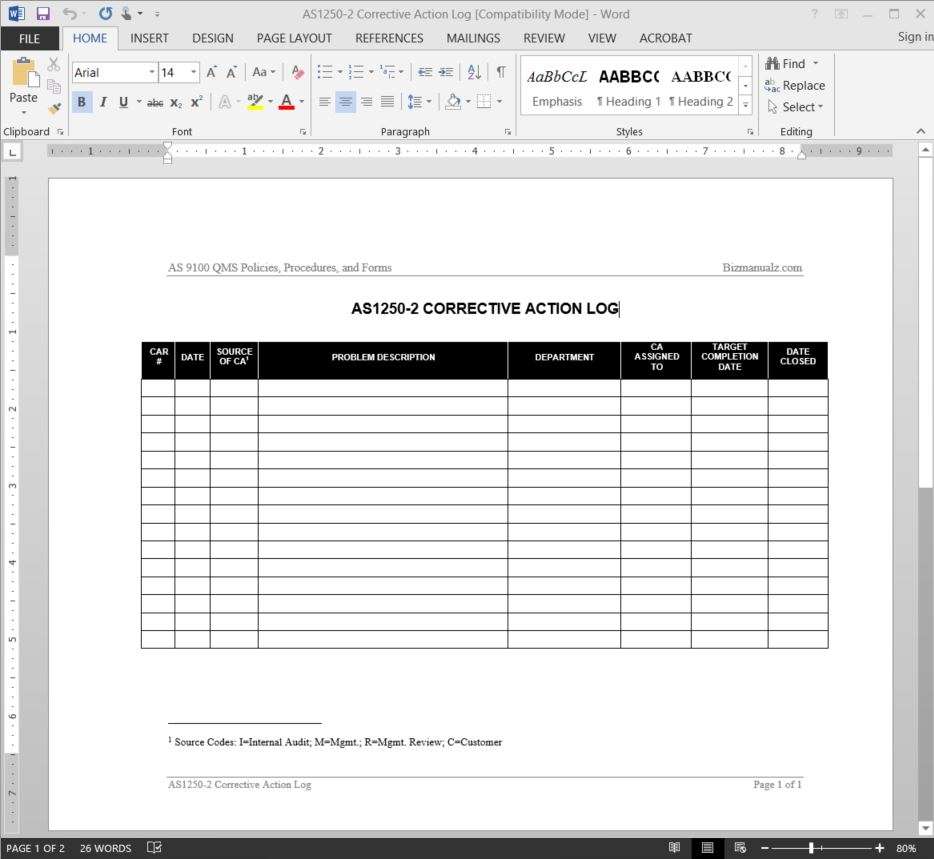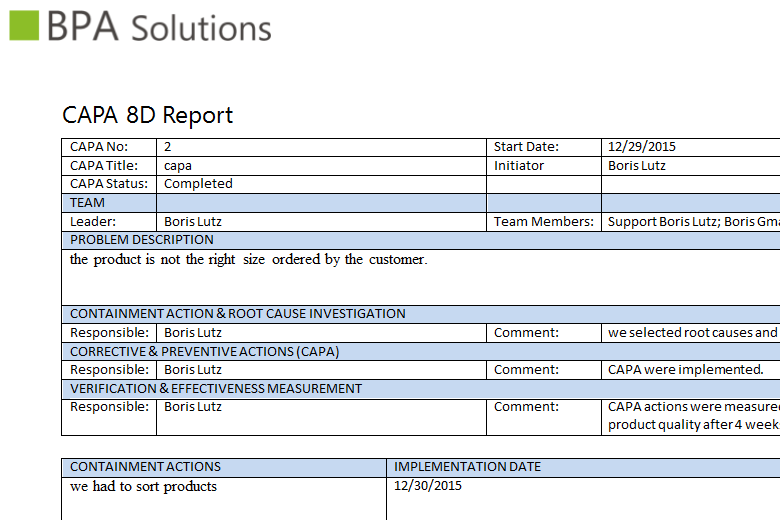
- #Iso 9001 corrective action form update
- #Iso 9001 corrective action form verification
- #Iso 9001 corrective action form software
- #Iso 9001 corrective action form iso
The benefits of performing effective corrective actions is much more than receiving a certification on a wall or appeasing a customer.
#Iso 9001 corrective action form verification
When the time for the verification comes document the specifics of what was reviewed, the actual work orders or the products that were observed. Document the specifics of what requirements will be needed. Whatever it is that will tell you the action was effective and the problem will not recur. You need to be specific, determine how many work orders need to be reviewed, how many products need to be in conformance, or how much time needs to pass.

Instead, before the action is implemented, determine what evidence you will need to have the confidence that the action was effective at meeting its intended goal. There’s no confidence that there will be any kind of return on all of the resources that were invested into solving the problem. With this approach there’s no benefit to the organisation. It doesn’t tell you if the action was effective at solving the original problem. It only states that the task was completed, another box checked if you will.
#Iso 9001 corrective action form update
However, this doesn’t identify if the creation of the checklist or if the update of the procedure actually solved the problem. It’s common to see the effectiveness verification documented as ‘the form has been created’ or ‘the procedure was updated’. The importance of verifying the effectiveness of the action is obviously to make sure it works so the problem doesn’t occur again.

When determining what action is to be taken, you’ll also want to determine how you’re going to verify that the action is effective. While the customer will be pleased for the short term, they will certainly not be pleased when they see the problem recur again. Many confuse fixing or correcting the immediate problem with getting the product or service out to the customer as the actual root cause of the systemic issue and not fixing the root cause. Also be careful to not fall into the trap of fixing the the immediate problem and then moving on. Many things will need to be considered, including the cost involved, resources required, and the time that it takes to implement. Once the root cause of the problem has been identified, it’s time to figure out what is the best action to take. Unless you do your due diligence and go down the path of investigating the root cause and analyse the data how would you ever know? However, don’t use this excuse to simply gloss over it and do the bare minimum or nothing at all. It’s the old saying of ‘spending a dollar to save a nickel’, it just doesn’t make good business sense. It’s easy to imagine that it could cost more to discover the problem and/or implement the necessary action to eliminate it than the product or service is even worth. There could be a point of diminishing returns. While in the perfect world it’s ideal to identify the root cause of the problem, it doesn’t always make good business sense. Is it always necessary to pin point the root cause of the problem? The answer is yes and no. To gain the most benefit, the root cause of the problem needs to be identified. But does this really solve the problem that was identified and benefit the organisation? It might in the short term, but probably not for the long haul. Just enough information is recorded on the form to appease the auditor or customer. The root cause of the problem is not thoroughly analysed and therefor the implemented action does not solve the problem. When an organisation is documenting Corrective Actions only because it’s demanded of them, just the motions are executed and the true benefits of the process are not realised. The fire will come back and you will once again use valuable resources to resolve it. If the root cause of the systemic problem is not identified then the chances of it recurring are very high. This is where performing a corrective action with a thorough root-cause analysis becomes critical. Why should the corrective action system be any different? You will invest valuable resources into the process so you should also receive the benefits of the elimination of the causes of problems you’re experiencing and not continuing to fight the same battles.
#Iso 9001 corrective action form software
Like any piece of equipment, software or personnel that is added to the organisation there is an expected return on the investment. However, corrective actions, when performed effectively, can add an enormous amount of value not only to the quality management system, but to the company as a whole. They are often looked at as a necessary evil of achieving certification or appeasing the customer.

Many times the only corrective actions that a company has documented in their system are those that have been created for audit findings or demanded by customers.
#Iso 9001 corrective action form iso
Corrective actions are one of the most valuable yet under utilised processes of an ISO Certification system.


 0 kommentar(er)
0 kommentar(er)
